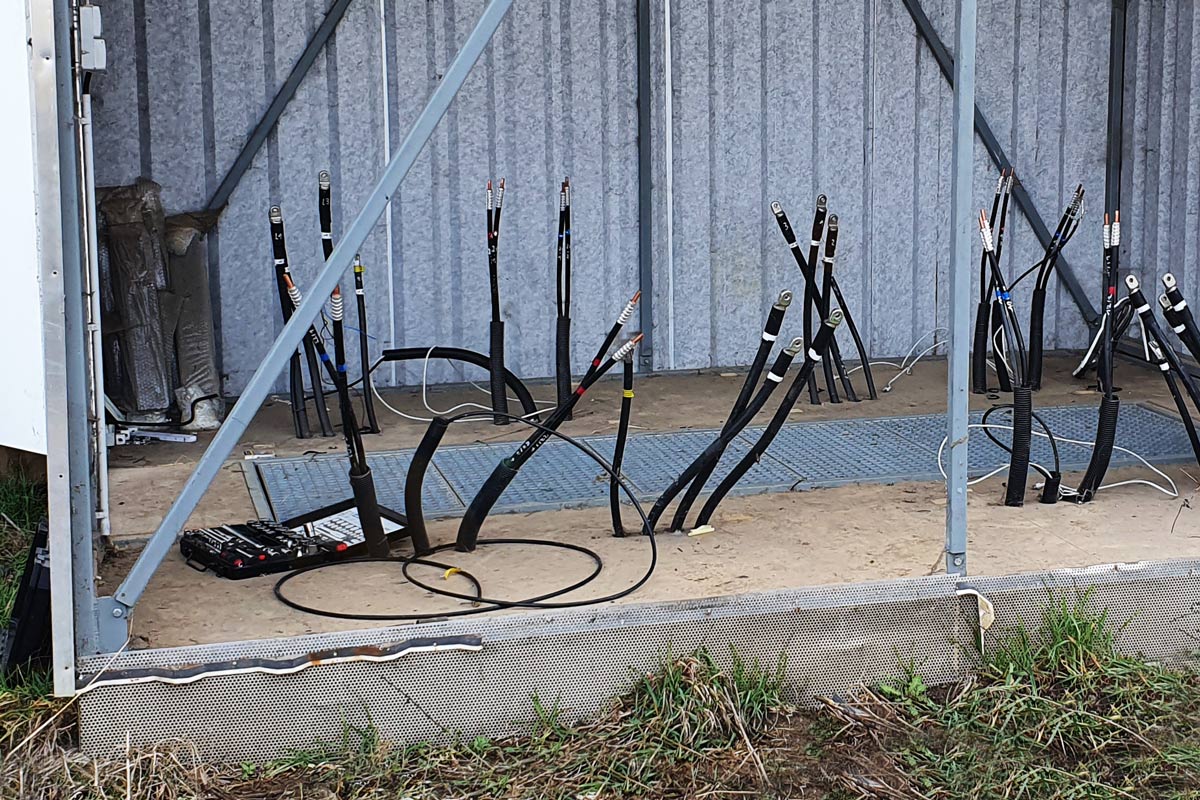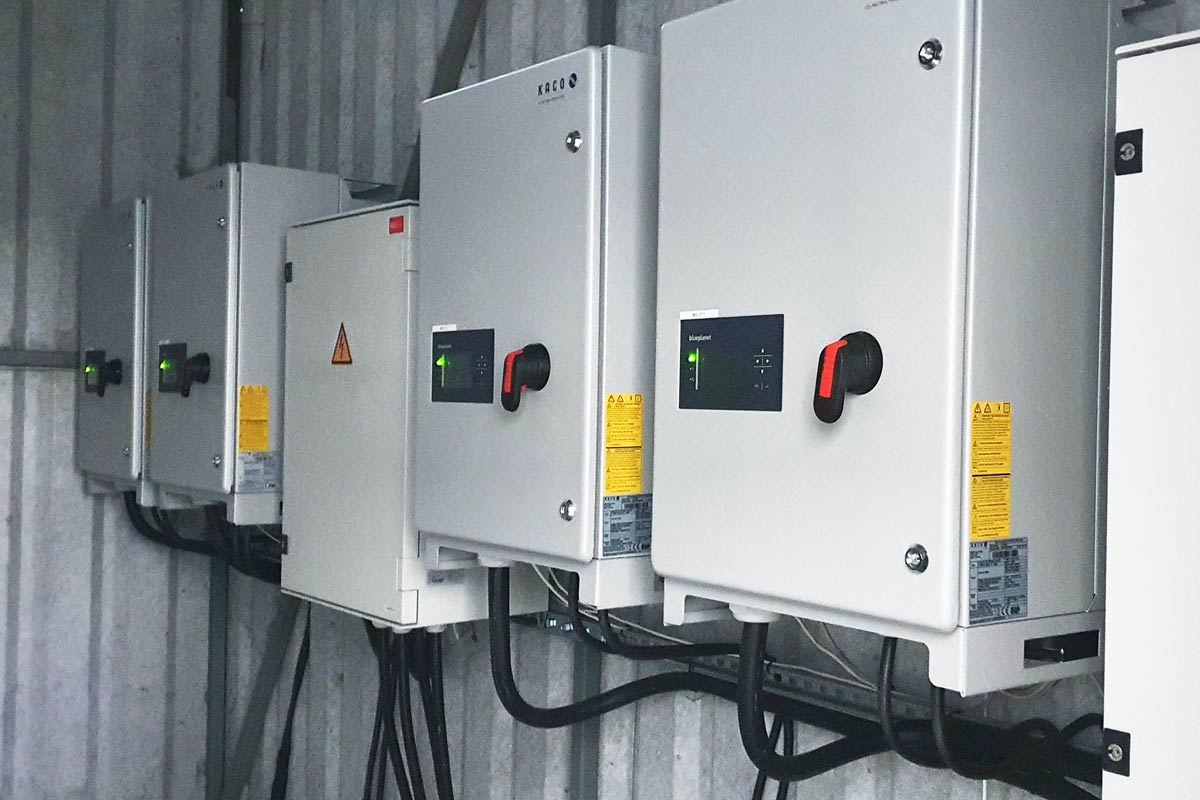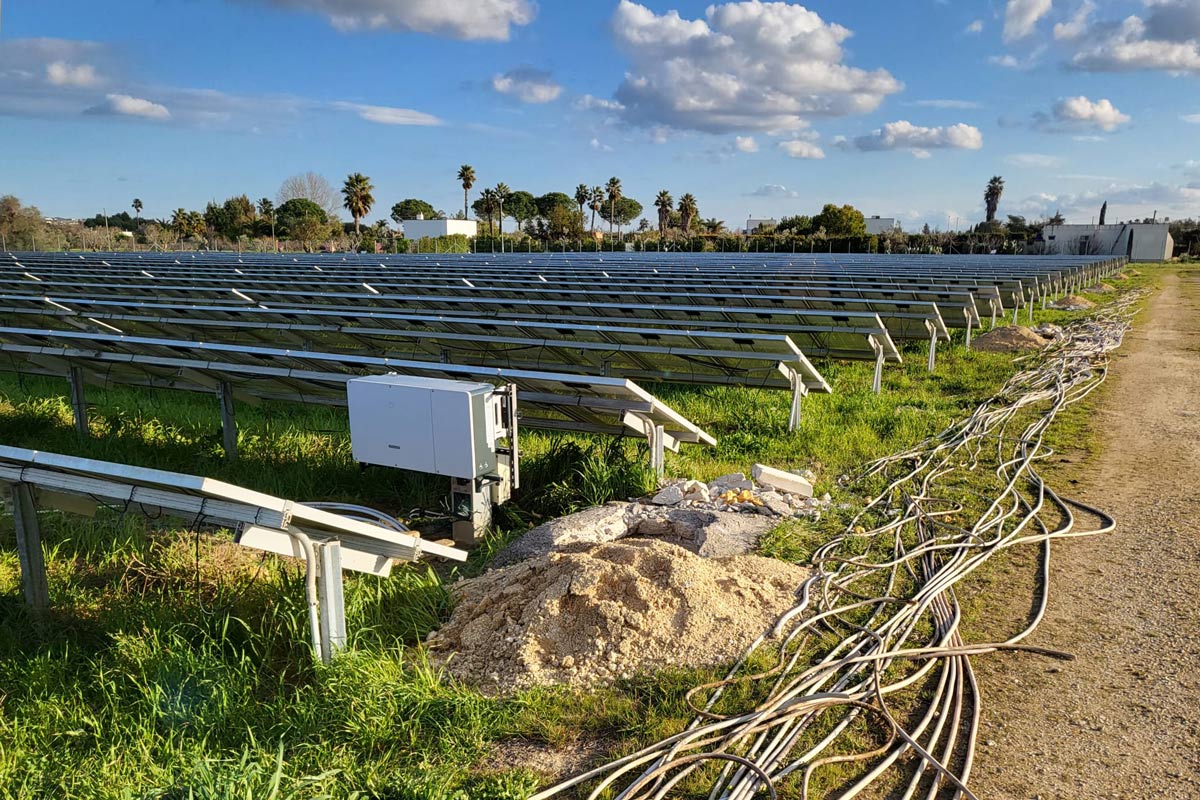
Refitting and repowering PV systems
Upgrading your PV system: Increased performance and service life through refitting and repowering
Increased energy production, long-term system availability and lower service costs are the advantages of refitting and repowering, both necessary measures for replacing out-of-production, defective components with newer models. Older components of a solar plant also require more maintenance, so completely replacing them is usually the best option. Read on to find out more about the long-term value of refitting and repowering.
Refitting and repowering solar plants: A comparison
Refitting
Both terms essentially refer to the optimisation of a PV system or its elements. The PV experts at Iqony Sens further define refitting (also called revamping) as the changing of components that are relevant for a system’s energy production. Depending on national requirements, however, the increase in the solar plant’s output may not exceed 1% of the originally approved output – which is the case in Italy, for example. In Germany, exceeding the connected load for an existing system is not permitted, which maintains the original feed-in tariff on all energy production.
Replacing outdated or irrelevant energy production components (e.g. monitoring systems, control systems, etc.) is another possibility that doesn’t affect the feed-in tariff.
Repowering
Repowering, on the other hand, is understood at Iqony Sens as a change in production-relevant components (PV modules, inverters), resulting in an increase in system performance, such as efficiency. The components can be modernised by expansion or replacement. For example, a defective module can be replaced by a newer model of comparable performance or a more powerful model altogether.
Ensuring that the connected load for AC (alternating current) and DC (direct current) is maintained as per the system certificate is paramount, however. Otherwise, the feed-in tariff may be void. Such processes are becoming easier, though, as the technology for modules and inverters has made enormous progress in recent years. For one, repowering can increase the PV generator’s efficiency now, since the new components are usually equipped with more modern process technology.
If the PV system has a feed-in tariff, two separate tariff rates are required after repowering:
- Feed-in tariff with an output corresponding to the original capacity (old installation).
- Exceeding these connected loads would constitute an extension of the installation and must therefore be calculated separately (extension installation).
Application instances or when to use refitting and repowering
Applications of repowering
Components may have lower performance than when the system was installed due to ageing or outdated technology caused by degradation or a lack of spare parts. Older components often require high maintenance and even higher costs (e.g. inverters), so replacing them with new components makes perfect sense. Newer technology and better spare parts availability also mean generating energy becomes more efficient, standardised, digitalised and maintenance-friendly, not to mention having several years of manufacturer warranty.
Another instance is defective or damaged components that are no longer produced on the market as they used to be. Since the same model cannot replace them, repowering is in order. With new components, the performance of the solar park can be raised to the previous level, or even increased.
Applications of refitting
An application instance for refitting involves replacing components that are not relevant to production. If, for example, old components of the monitoring system fail due to a defect, it isn’t necessarily possible to determine if the defect was a result of a communication fault or a loss of performance. In modern monitoring, though, a software solution with artificial intelligence can be used to detect production-relevant faults more effectively, more quickly and, if necessary, even predictively. This clearly increases the profitability of the plant by reducing downtimes.
It turns out that refitting and repowering are not always that easy to differentiate. For underperforming PV systems, for example, the owner could decide to refit one or more main components to maximise the income from the feed-in tariff. And within the scope of repowering, the monitoring must of course be clarified, thus guaranteeing the technical communication connection to the new inverter.
NOTE:
Before starting refitting or repowering, a thorough investigation of the solar installation, including planning for a possible retrofitting, should be conducted. A cost-benefit analysis should then be prepared for each solution to ensure the effectiveness of the potential refitting.
The advantages at a glance
Advantages
The increase in the amount of energy produced is an important advantage, especially when it comes to repowering. An increase in the service life of the plant is just as advantageous, too, as it ensures that the plant will generate green electricity for many years while the availability of spare parts increases – all that with as little effort as possible. This brings us to the last major advantage of repowering and refitting, namely that the one-time upgrade of a PV system in the event of a defect or technological advancement eliminates frequent, expensive downtime, thus drastically reducing the associated service costs. Here’s a quick list of the advantages:
- Increases the amount of energy produced
- Extends the service life of a PV system
- Reduces outages
- Lowers service costs
Practical examples
Practical example 1: Refitting prevents frequently occurring defects in inverters
The Iqony Sens service team conducted refitting for a customer’s rooftop PV installation in Saxony-Anhalt, Germany in spring 2020. This involved removing the existing inverters and replacing them with new, more modern ones that were easier to maintain. The sparse availability of spare parts and the frequent defects in the old inverters meant that the direct current produced could no longer be converted into usable alternating current, resulting in long downtimes, increased costs and a lower energy yield – making the refitting a necessity. Because of these new measures, the customer now has roughly twice the amount of energy available, which is almost equal to the initial energy yield of the decades-old plant. The performance ratio of this system (the relation of solar radiation to energy production) is now around 86%, a perfect annual yield.

Defective inverters removed

New inverters increasing yield
Practical example 2: Repowering replaces the central inverter with a string inverter
A current repowering project by Iqony Sens is in progress at several solar parks in Italy involving the optimisation of PV plants with a total output of 24 MWp. One project is the 1 MWp high-performance solar park in Parabita, in the south of Italy, where central inverters are being replaced with string inverters to increase the yield.
A central inverter is replaced by approximately eight string inverters. The fact that hardware faults are now recorded via several string inverters instead of a central inverter has several advantages. On the one hand, fault detection becomes simpler and faster, as it’s easier to localise. On the other hand, the system performance is better protected and the yield increases, since the hardware loss of one string affects a much smaller part of the system. Lastly, modern string inverters are more maintenance-friendly (partly due to the availability of spare parts).

New, modern string inverter in Parabita
The other projects for Obton also include replacing old modules with bifacial modules and upgrading many other components.
Is your PV system producing its maximum possible yield? Our experts can check the current performance of your system and raise its energy generation to a whole new level with the help of customised services. Feel free to contact us.
Updated on 23.02.2023
Pictures: Iqony Sens
